Many people may think that the decibel is a volume unit. However, decibels are more than just used to indicate volume. In addition to dB, other units such as dBV, dBu and dBFS, etc, they seem to be related to decibels, but what they are and what’s the difference? Here comes the answer below help you figure it out.
The relationship between volume and decibels
In daily life, when we talk about sound, the sound volume usually refers to the sound pressure level (SPL). Sound drives the tympanic membrane of our ears to vibrate through the vibration of the medium (air) to produce sound that we can perceive. In this process, the sound pressure acts on the tympanic membrane. The standard measurement unit of sound pressure level is decibel, or dB, which is one-tenth of Bel. The reason why dB was chosen is because in the audio field, the Bel unit is too large and not convenient for daily expressions.
As the standard measurement unit of sound pressure level, decibels are defined as the ratio between two volumes, which is a relative value. However, in practical applications, the sound pressure level can represent an absolute volume value. At this time, the implicit contrast volume is the weakest sound that the human ear can hear, and it is recorded as 0dB SPL. That is, when we say that the monitoring volume should not exceed 80dB, 80dB means that the sound pressure of the weakest sound is 10,000 times higher (80dBSPL). If your phone has a decibel meter, you might as well take it out and test your working sound pressure level in dBSPL.
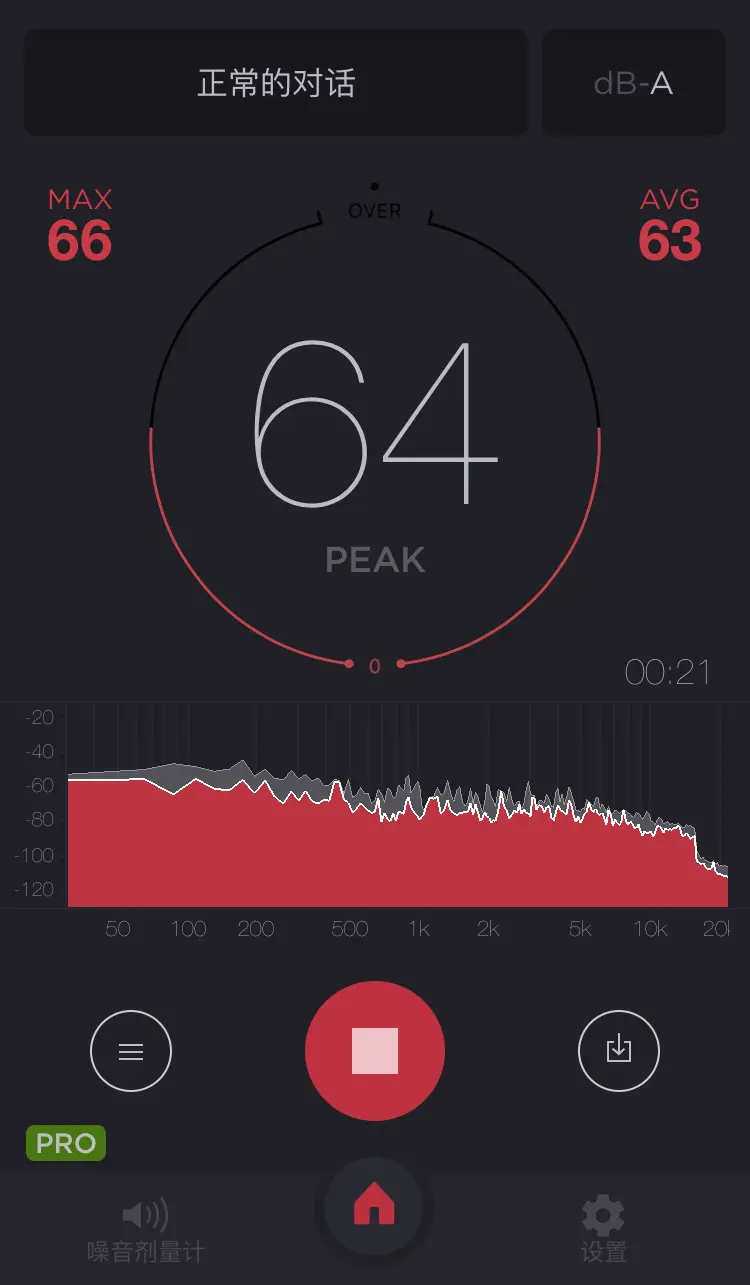
The decibel represents the multiple relationship between two quantities. When expressing voltage or sound pressure level, +6dB means that the voltage value or sound pressure is doubled. But when expressing power, +3dB means that the power is doubled. Then why can't it be expressed in multiples instead of adding the unit of dB? Let’s first guess what is the 140dB difference between the faint sound that the human ear can hear and the maximum volume that makes your ears feel painful if expressed in an ordinary multiple relationship? It is 100,000,000,000,000 times (how many zeros are there in the count, and the volume is expressed in power, so the second formula at the end of the article is used here). It can be seen that it is very cumbersome to use ordinary multiples to express the volume. Logarithm is a good way to compress numbers, but the reason the audio field loves this unit is because it is consistent with the changes in our ears. In order to let everyone know how much dB represents how many times do not have to touch the mathematical formula, the author lists some examples below, you can refer to:
The following data takes sound pressure as an example (also applicable to voltage),
+6dB=double increase
+20dB=10 times increase
+40dB=100 times increase
+60dB=1000 times increase
+80dB= 10000 times increase
It can be seen that for every 20dB of sound pressure, it is 10 times the relationship. With this in mind, you can basically say goodbye to the damn formula.
What exactly are dBV, dBu, and dBFS?
Note that the following content is a bit brain-burning. To be honest, if you didn't compare the parameters of the sound card carefully, you may have never seen these units. However, dBu and dBFS are frequent visitors to the detailed parameter panel of a sound card, just like the detailed parameters of Antelope and Universal sound cards in the picture.
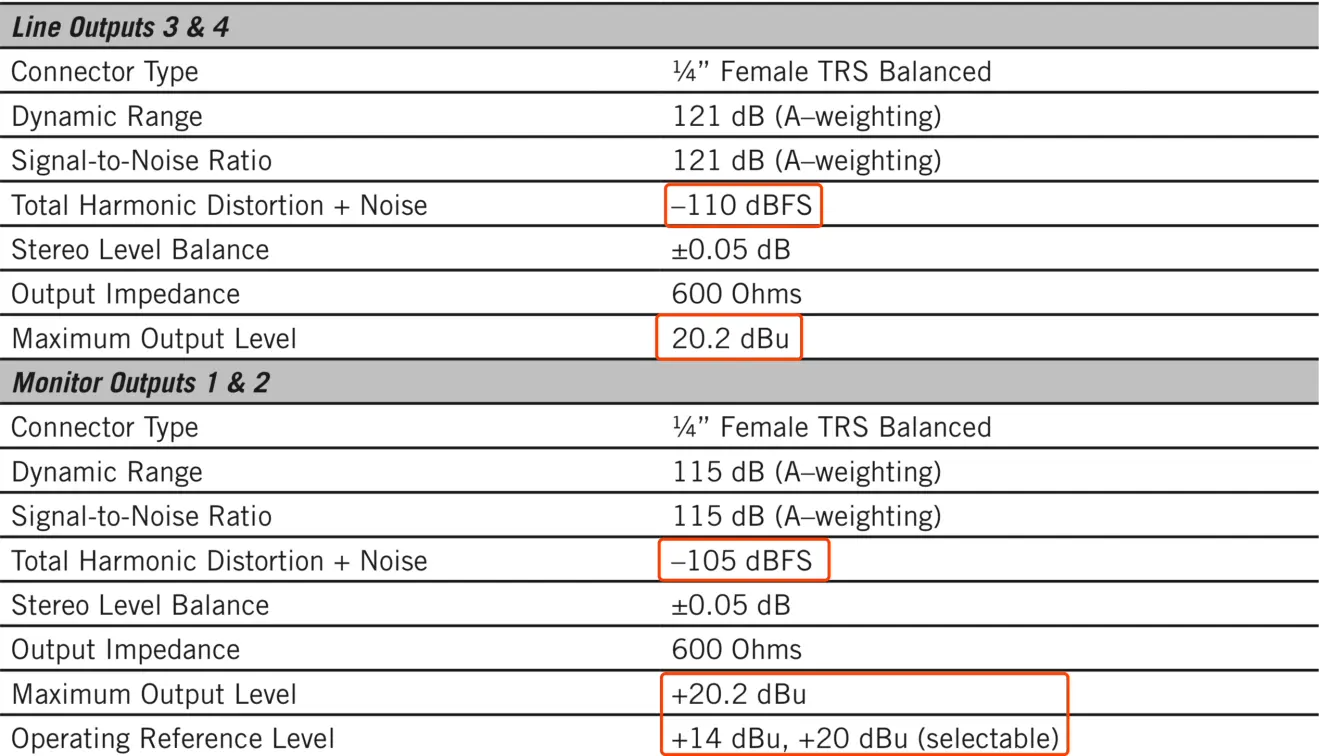
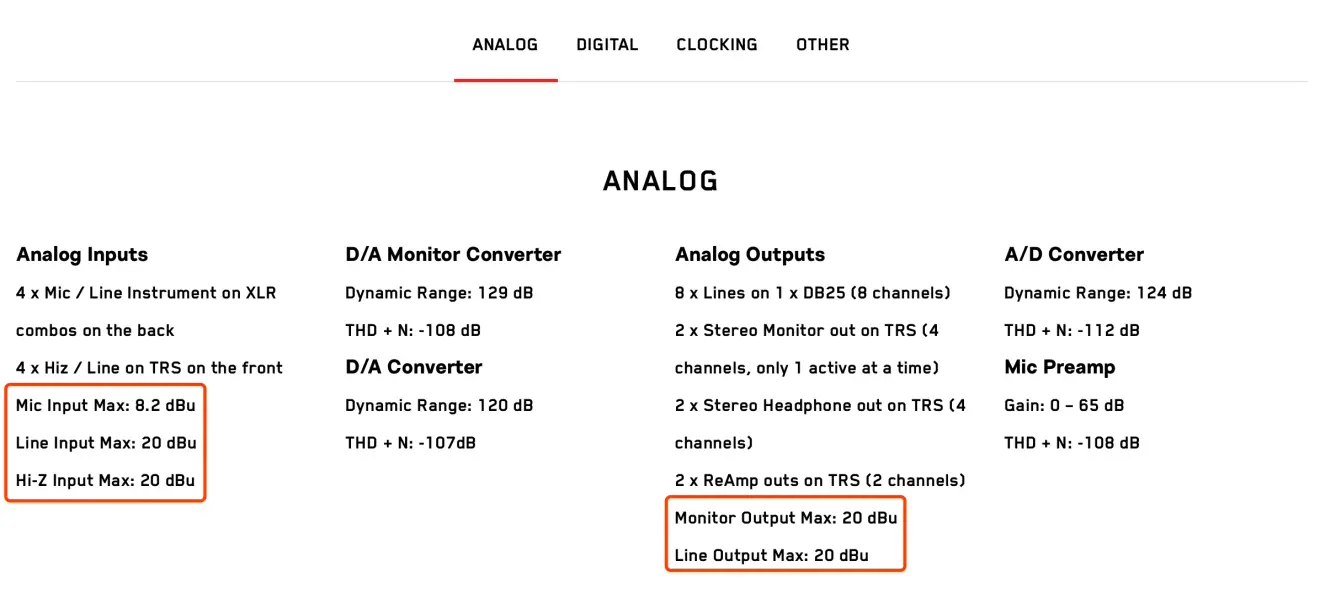
dBu and dBV are actually in the same group, and their relationship is very close. Both of them are products of analog audio, which is why they are only found in the parameters related to analog input and output. Although both are dB, they are not the same as dBSPL. dBSPL exists in the real acoustic space (such as the space from the speaker to the human ear), while dBu and dBV exist in cables and circuits to measure the audio signal. For now, these audio signals are electrical signals, so dBu and dBV are the level units we often say. As mentioned earlier, dB is a relative value, but if you add a reference value, it can become an absolute value. In fact, this is how dBu and dBV come from. The reference value of dBu is 0.775V, which means that 0dBu=0.775V, which is a voltage value; and 0dBV=1V. So for us, is it useful to know this? It's useless. The Input Max here is that when the input level exceeds this value, distortion will occur. The specific performance is that the indicator light of your sound card changes from green to red.
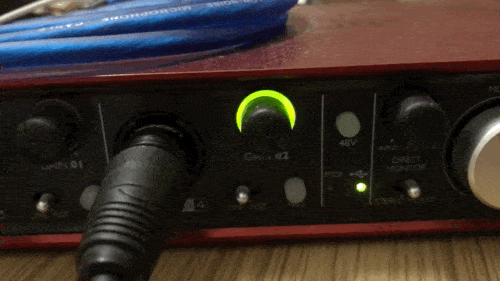
dBFS is something unique to digital audio. It is the same thing as the two guys above but does not exist in the same dimension. The correspondence between the two is different in each country, so I won't talk about it here. The maximum value of dBFS is 0, and the first rate is negative. All signals exceeding 0dBFS will produce distortion, and this kind of distortion (Digital Clipping) is much uglier than the above kind of distortion, and it only takes a little bit to destroy the entire audio.
Conclusion
The article is so long, but we just want to tell you that dB is a relative value. Because of the addition of reference values, units such as dBu, dBV, and dBSPL are derived, but they are still decibels in nature.
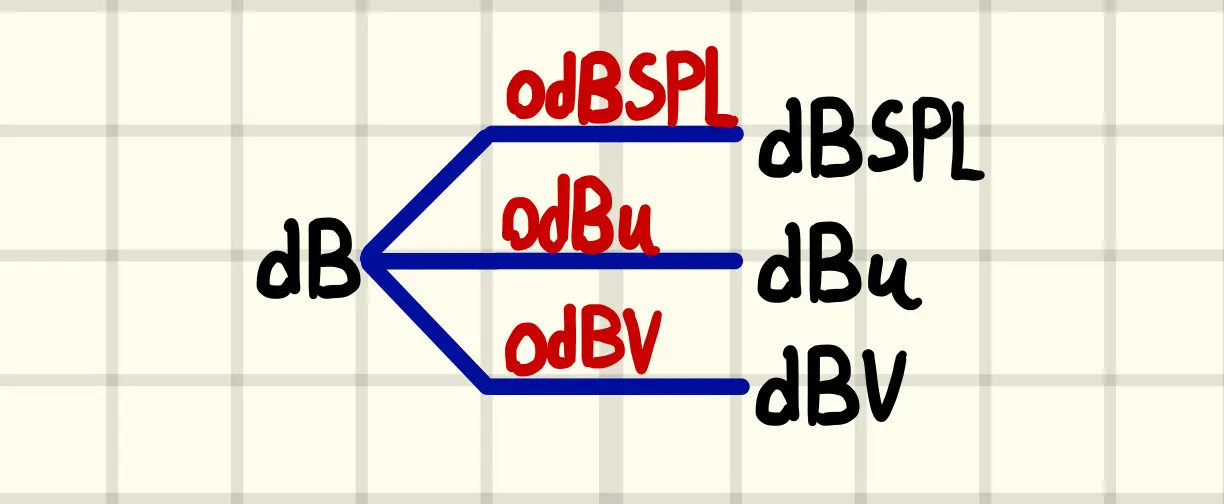
Another important point is that the loudness and the level are not equal (the loudness of the same level can be very different). Due to the space issue, I will explain it to you in the next few issues (if you have Interested). The following is the calculation formula for decibels:
 online service
online service 0086-591-8806 9579
0086-591-8806 9579 88067049
88067049 izzy@lexinda.com
izzy@lexinda.com sarahlpr
sarahlpr 86-15336506363
86-15336506363